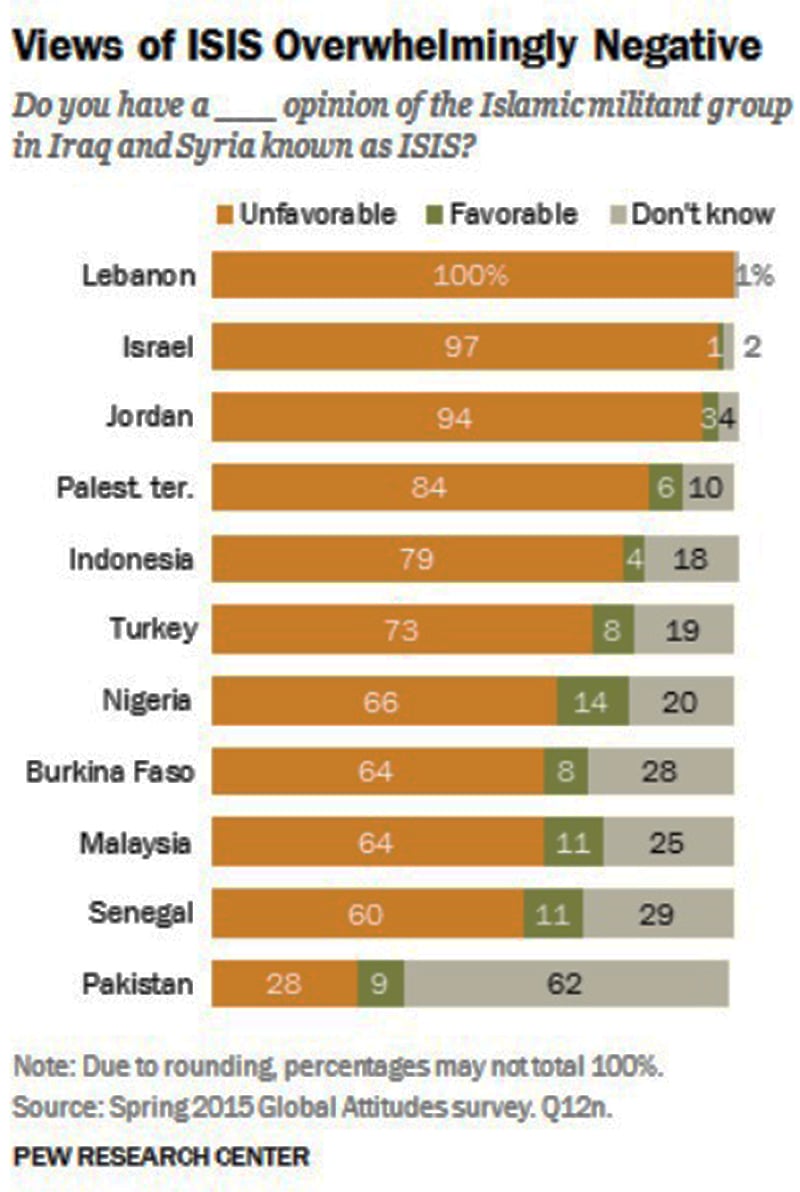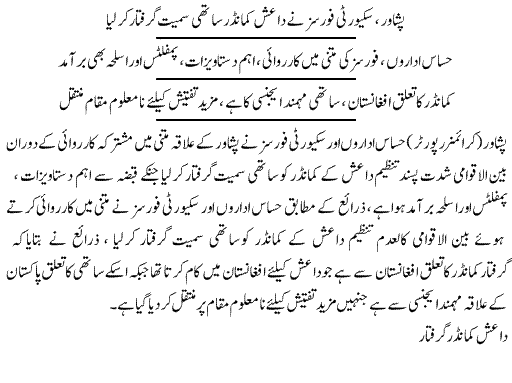pak-marine
ELITE MEMBER

- Joined
- May 3, 2009
- Messages
- 11,639
- Reaction score
- -22
- Country
- Location
Questions arise about IS presence in Attock
MOHAMMAD ASGHAR — PUBLISHED 22 minutes ago

CTD has in recent weeks been trying to verify reports that IS has set up a cell in Attock. ùOnline/File
RAWALPINDI: The suicide attack in Attock which claimed the lives of Punjab Home Minister Shuja Khanzada and others on Sunday has raised troubling questions about the possible presence of the self-styled Islamic State (IS) group in the area.
According to sources, the Counter-Terrorism Department (CTD) has in recent weeks been trying to verify reports that IS has set up a cell in Attock.
Officials privy to findings of the preliminary investigation into the attack said it had been carried out by the IS with help of the banned Tehreek-i-Taliban Pakistan.
Also read: Agencies warn Punjab IS recruiting in Pakistan
Retired Colonel Khanzada was instrumental in setting up the CTD in Punjab to curb the spread of extremism and terrorism.
According to an intelligence official, law-enforcement and intelligence agencies were on the lookout for possible backlash in the wake of the killing of Malik Mohammad Ishaq, the leader of the banned Lashkar-i-Jhangvi, and had issued “alerts” about the possibility of attacks on important political leaders and government installations.
However, he said, they had not issued any specific alert regarding threats to Mr Khanzada’s life.
The suicide attack came about two weeks after the death of Ishaq and his two sons in a mysterious encounter with CTD personnel.
A senior police officer had confirmed the presence of IS in Attock area in the past and said: “We received confirmed reports about its presence in the area and conducted several raids and search operations but failed to lay hands on any member of the organisation.”
In October last year, the Punjab home department had warned police that Chechen and Uzbek militants expelled from Waziristan during military operations were trying to get shelter under the IS, also known by its Arabic acronym Daesh.
In a letter to divisional police chiefs of Punjab and the CTD, the home department said some local militant groups were reportedly joining Daesh because of its anti-Shia policies.
However, it said that some militant groups were resisting attempts to establish IS in the country.
It quoted intelligence reports as saying a particular group had been attracted to Daesh which might be trying to secure support of jihadi outfits and militant groups in the country.
The home department directed law-enforcement agencies to keep an eye on individuals associated with banned outfits and check their activities.
Earlier, IS flags were found on electric poles in the sensitive area of Taxila.
Officially, Federal Interior Minister Chaudhry Nisar Ali Khan has been denying the presence of the IS in the country.
Published in Dawn, August 17th, 2015
MOHAMMAD ASGHAR — PUBLISHED 22 minutes ago

CTD has in recent weeks been trying to verify reports that IS has set up a cell in Attock. ùOnline/File
RAWALPINDI: The suicide attack in Attock which claimed the lives of Punjab Home Minister Shuja Khanzada and others on Sunday has raised troubling questions about the possible presence of the self-styled Islamic State (IS) group in the area.
According to sources, the Counter-Terrorism Department (CTD) has in recent weeks been trying to verify reports that IS has set up a cell in Attock.
Officials privy to findings of the preliminary investigation into the attack said it had been carried out by the IS with help of the banned Tehreek-i-Taliban Pakistan.
Also read: Agencies warn Punjab IS recruiting in Pakistan
Retired Colonel Khanzada was instrumental in setting up the CTD in Punjab to curb the spread of extremism and terrorism.
According to an intelligence official, law-enforcement and intelligence agencies were on the lookout for possible backlash in the wake of the killing of Malik Mohammad Ishaq, the leader of the banned Lashkar-i-Jhangvi, and had issued “alerts” about the possibility of attacks on important political leaders and government installations.
However, he said, they had not issued any specific alert regarding threats to Mr Khanzada’s life.
The suicide attack came about two weeks after the death of Ishaq and his two sons in a mysterious encounter with CTD personnel.
A senior police officer had confirmed the presence of IS in Attock area in the past and said: “We received confirmed reports about its presence in the area and conducted several raids and search operations but failed to lay hands on any member of the organisation.”
In October last year, the Punjab home department had warned police that Chechen and Uzbek militants expelled from Waziristan during military operations were trying to get shelter under the IS, also known by its Arabic acronym Daesh.
In a letter to divisional police chiefs of Punjab and the CTD, the home department said some local militant groups were reportedly joining Daesh because of its anti-Shia policies.
However, it said that some militant groups were resisting attempts to establish IS in the country.
It quoted intelligence reports as saying a particular group had been attracted to Daesh which might be trying to secure support of jihadi outfits and militant groups in the country.
The home department directed law-enforcement agencies to keep an eye on individuals associated with banned outfits and check their activities.
Earlier, IS flags were found on electric poles in the sensitive area of Taxila.
Officially, Federal Interior Minister Chaudhry Nisar Ali Khan has been denying the presence of the IS in the country.
Published in Dawn, August 17th, 2015










